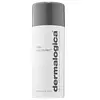What's inside
What's inside
 Key Ingredients
Key Ingredients

 Benefits
Benefits

 Concerns
Concerns

 Ingredients Side-by-side
Ingredients Side-by-side

Microcrystalline Cellulose
AbsorbentMagnesium Oxide
AbsorbentSodium Cocoyl Isethionate
CleansingColloidal Oatmeal
AbsorbentDisodium Lauryl Sulfosuccinate
CleansingSodium Lauroyl Glutamate
Oryza Sativa Bran Extract
Skin ConditioningOryza Sativa Starch
AbsorbentHydrogenated Coconut Acid
EmollientAllantoin
Skin ConditioningPapain
Skin ConditioningSalicylic Acid
MaskingGinkgo Biloba Leaf Extract
Skin ConditioningCamellia Sinensis Leaf Extract
AntimicrobialGlycyrrhiza Glabra Root Extract
BleachingPCA
HumectantPopulus Tremuloides Bark Extract
AntiseborrhoeicCyclodextrin
AbsorbentSodium Isethionate
CleansingLauryl Methacrylate
Maltodextrin
AbsorbentMelaleuca Alternifolia Leaf Oil
AntioxidantCitrus Paradisi Peel Oil
MaskingSodium Dehydroacetate
PreservativeHydrolyzed Corn Starch Hydroxyethyl Ether
Emulsion StabilisingWater
Skin ConditioningLimonene
PerfumingCitric Acid
BufferingMicrocrystalline Cellulose, Magnesium Oxide, Sodium Cocoyl Isethionate, Colloidal Oatmeal, Disodium Lauryl Sulfosuccinate, Sodium Lauroyl Glutamate, Oryza Sativa Bran Extract, Oryza Sativa Starch, Hydrogenated Coconut Acid, Allantoin, Papain, Salicylic Acid, Ginkgo Biloba Leaf Extract, Camellia Sinensis Leaf Extract, Glycyrrhiza Glabra Root Extract, PCA, Populus Tremuloides Bark Extract, Cyclodextrin, Sodium Isethionate, Lauryl Methacrylate, Maltodextrin, Melaleuca Alternifolia Leaf Oil, Citrus Paradisi Peel Oil, Sodium Dehydroacetate, Hydrolyzed Corn Starch Hydroxyethyl Ether, Water, Limonene, Citric Acid
Water
Skin ConditioningCocamidopropyl Betaine
CleansingDistearyl Phthalic Acid Amide
EmollientCetyl Alcohol
EmollientStearyl Alcohol
EmollientNiacinamide
SmoothingJojoba Esters
EmollientSodium Methyl Cocoyl Taurate
CleansingSodium Chloride
MaskingCitric Acid
BufferingKojic Acid
AntioxidantAloe Barbadensis Leaf Juice
Skin ConditioningCamellia Sinensis Leaf Extract
AntimicrobialSodium Hydroxide
BufferingPhenoxyethanol
PreservativePEG-120 Methyl Glucose Dioleate
EmulsifyingCaprylyl Glycol
EmollientEthylhexylglycerin
Skin ConditioningHexylene Glycol
EmulsifyingMenthol
MaskingSodium Bisulfite
AntioxidantDisodium EDTA
Chromium Hydroxide Green
Butylene Glycol
HumectantWater, Cocamidopropyl Betaine, Distearyl Phthalic Acid Amide, Cetyl Alcohol, Stearyl Alcohol, Niacinamide, Jojoba Esters, Sodium Methyl Cocoyl Taurate, Sodium Chloride, Citric Acid, Kojic Acid, Aloe Barbadensis Leaf Juice, Camellia Sinensis Leaf Extract, Sodium Hydroxide, Phenoxyethanol, PEG-120 Methyl Glucose Dioleate, Caprylyl Glycol, Ethylhexylglycerin, Hexylene Glycol, Menthol, Sodium Bisulfite, Disodium EDTA, Chromium Hydroxide Green, Butylene Glycol
 Reviews
Reviews

Ingredients Explained
These ingredients are found in both products.
Ingredients higher up in an ingredient list are typically present in a larger amount.
Camellia Sinensis Leaf Extract is derived from the leaves of the tea plant. Black tea, green tea, and oolong tea are all harvested from this plant.
This ingredient has many skin benefits:
This ingredient contains polyphenols, a strong antioxidant. Antioxidants help fight off molecules that damage skin cells.
On top of that, the antioxidants in green tea neutralize free-radicals from the sun. This gives the skin some extra UV protection, but should not replace sunscreen.
Many components of tea have anti-inflammatory properties.
Polyphenols and L-theanine help soothe the skin and reduce irritation. The caffeine in Camellia Sinensis Leaf Extract helps calm inflamed blood vessels.
Other compounds found in tea include: Vitamin Bs, linoleic acid, magnesium, calcium, iron, and zinc.
Research has shown both drinking Camellia Sinensis Leaf Tea and applying it to the skin can help boost skin elasticity and hydration. Studies also show using tea extract may reduce sebum, or oil, production.
Learn more about Camellia Sinensis Leaf ExtractCitric Acid is an alpha hydroxy acid (AHA) naturally found in citrus fruits like oranges, lemons, and limes.
Like other AHAs, citric acid can exfoliate skin by breaking down the bonds that hold dead skin cells together. This helps reveal smoother and brighter skin underneath.
However, this exfoliating effect only happens at high concentrations (20%) which can be hard to find in cosmetic products.
Due to this, citric acid is usually included in small amounts as a pH adjuster. This helps keep products slightly more acidic and compatible with skin's natural pH.
In skincare formulas, citric acid can:
While it can provide some skin benefits, research shows lactic acid and glycolic acid are generally more effective and less irritating exfoliants.
Most citric acid used in skincare today is made by fermenting sugars (usually from molasses). This synthetic version is identical to the natural citrus form but easier to stabilize and use in formulations.
Read more about some other popular AHA's here:
Learn more about Citric AcidWater. It's the most common cosmetic ingredient of all. You'll usually see it at the top of ingredient lists, meaning that it makes up the largest part of the product.
So why is it so popular? Water most often acts as a solvent - this means that it helps dissolve other ingredients into the formulation.
You'll also recognize water as that liquid we all need to stay alive. If you see this, drink a glass of water. Stay hydrated!
Learn more about Water